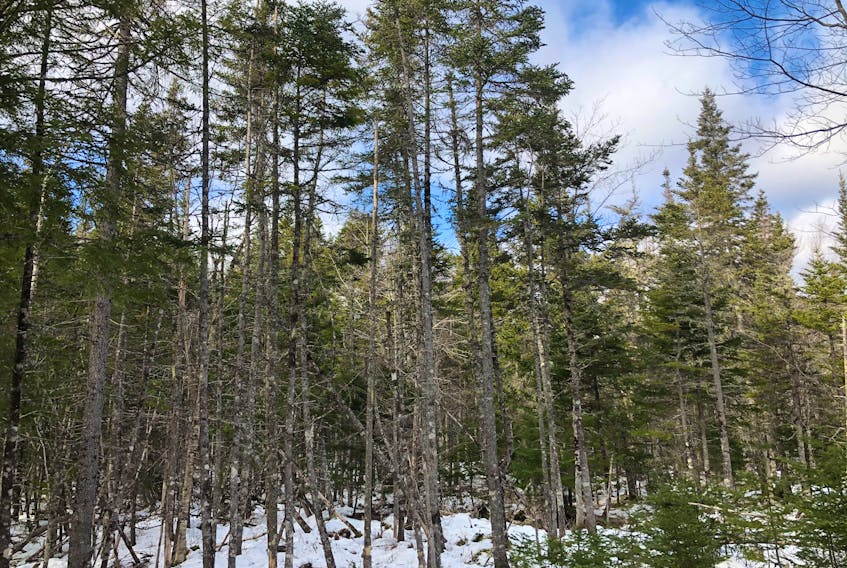SYDNEY, N.S. — The province is continuing to move forward with its new triad model of ecological forestry on Crown lands.
The Department of Lands and Forestry has opened public consultations on its new draft forest management guide, dubbed the Silvicultural Guide for the Ecological Matrix.
The draft guide’s triad model has three legs that will work together: conservation zones, high production forestry zones and mixed-use or matrix zones.
Only Crown land, which is about one-third of Nova Scotia’s forests, will be managed under the triad approach, said Peter Duinker, professor emeritus at Dalhousie University’s School for Resource and Environmental Studies in Halifax.
Three zones
No timber harvest will occur in the province’s conservation zones, except in serious emergencies, and the focus for them will be entirely on diversity conservation, recreation and other non-intrusive uses.
The high-production zones are “all about timber production with very basic environmental protection.”

Duinker said this zone is, in his opinion, needed to support the forest products sector that society has become accustomed to, as well as the highly desired products that it produces.
The final leg, mixed-use or matrix zones, will exist to pursue the “joint agenda of biodiversity conservation and timber production.”
Duinker said the rates of lumber production will be lower in this zone than in the high-production one, but he expects the diversity of forest products — such as hardwood products and veneer-quality logs — coming out of them to eventually become higher.
“Biodiversity conservation [in the mixed-use zone] may not be quite as thorough and complete as we can get in the conservation zone, but it should be close.”
Lands and Forestry states the three zones in the triad model should work together to enable ecological and economic goals to coexist, with the goal of maintaining both healthy forests and a sustainable forestry sector.
“The model is great in theory,” said Duinker. “It simplifies the joint pursuit of biodiversity conservation and timber production.”
Duinker said he supports the concept of the triad, however “the devil is in the proverbial details and implementation.”
The challenges
Assessing which sections of forest will be assigned with which category will be a tough job.
“The conservation agenda is well advanced with respect to areas protected, but more will be done.”
Duinker said the biggest unknown for him right now is how high-production forest areas will be chosen, which must be done soon. The process is likely to be highly contentious.
“The criteria for these choices are being finalized as I write, and they will be out for public review soon. Then it becomes a joint technical-political matter of making the decisions.”
The process is technical because criteria must be applied to the landscape to see which forested areas are eligible for conservation versus production (or a mix of the two), and political because many citizens and stakeholders will likely have ideas about what should be done in particular areas.
Part of the ecological forestry model involves attempting to emulate natural disturbance regimes (NDRs), which are the historic patterns of natural processes that affect ecosystems and landscapes in a particular area, things like fire, insects, wind and mass movement, according to Oxford Reference.
Figuring out what is natural in the time of climate change, though, is complicated.
“Most of the understanding we apply to both biodiversity conservation and silvicultural strategies is based on the past,” said Duinker.
Natural disturbance regimes can run freely in protected areas, and are irrelevant in high-production forestry, however they’re supposed to guide what is decided in the matrix zone, which could potentially constitute around two-thirds of Crown land.
“What if climate change invalidates all we know about NDRs? I think it will,” said Duinker. “So the challenge here will be to continue to modify our silviculture regimes so that they actually do conserve biodiversity while climate change is raging through the 21st century.”
Anyone interested in the public consultations can visit the government website to view a summary of the stakeholder discussions to date, read the new draft guide and provide feedback by email.
Jessica Smith is a reporter with the Cape Breton Post.









